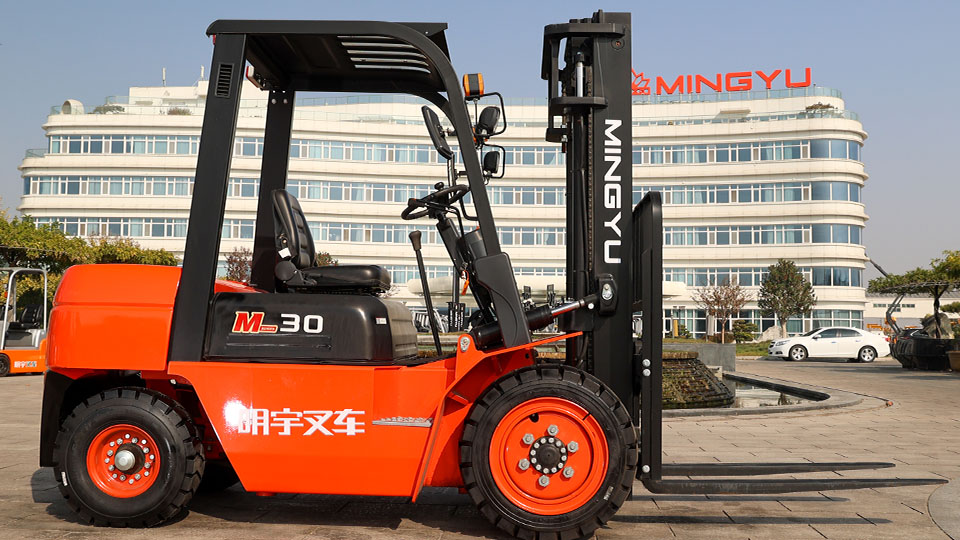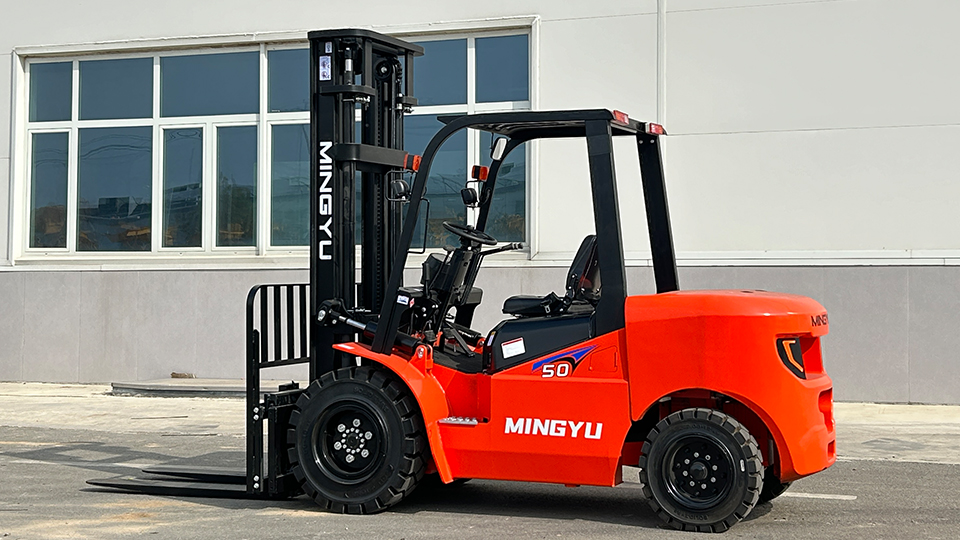
The Technical Mandate: Forklift Certification vs. License
The single most common point of confusion in material handling operations is the difference between a "forklift license" and a "forklift certification."
1. Forklift Certification (The OSHA Requirement)
Forklift certification is the legally required process for operating a forklift in a place of employment.4 It is site-specific and equipment-specific, meaning an operator must be certified to use the type of truck (e.g., Class I electric counterbalanced, Class IV internal combustion cushion tire) they will operate and for the specific workplace conditions (e.g., narrow aisles, ramp operation, pedestrian traffic) they will encounter.5
|
Certification Component |
Description |
Technical Goal |
|
Formal Instruction |
Classroom, online, or video training covering the principles of safe operation, warnings, precautions, and OSHA regulations. |
Knowledge Transfer: Ensures the operator understands the theoretical physics of stability and safety standards. |
|
Practical Training |
Hands-on demonstration and practical exercises with the specific type of PIT the operator will use, under the direct supervision of a qualified trainer. |
Skill Acquisition: Develops proficiency in maneuvering, load handling, and basic maintenance/inspection. |
|
Performance Evaluation |
An employer-led, in-person observation and assessment of the operator's ability to safely perform job duties in the actual work environment. |
Competency Verification: Documents that the operator can apply knowledge and skills safely in real-world conditions. |
Who Issues It? The employer is responsible for conducting the final evaluation and issuing the certification document, or "certifying" that the employee is competent.6
Validity: Certification is valid for a maximum of three years.7 Refresher training and evaluation are required sooner if:
The operator is involved in an accident or near-miss.8
The operator is observed operating the vehicle unsafely.9
The operator is assigned to a different type of powered industrial truck.10
Workplace conditions change (e.g., new racking, different floor surface).11
2. Forklift License (The Misleading Term)
The term "forklift license" is non-standard and often used to refer to the OSHA-mandated certification card.12
Standard Driver's License: OSHA does not require an operator to possess a valid motor vehicle driver's license to operate a forklift in the workplace.13 (Note: State or local laws may require one if the forklift is used on public roads, but this is a rare exception).
State-Issued Licenses: A very small number of states may have specific, state-issued licenses or endorsements for operating heavy equipment, but the vast majority rely solely on the Federal OSHA standard of employer-certified training.
In technical and regulatory terms, the required credential is a certification. Failure to have this certification is a serious OSHA violation subject to substantial penalties.14
Technical Requirements of the Training Curriculum
The OSHA standard is specific about the content that must be covered, ensuring a comprehensive understanding of vehicle dynamics and workplace hazards. The training must address three key categories: truck-related topics, workplace-related topics, and OSHA requirements.15
I. Vehicle-Specific Technical Training
The curriculum must focus on the unique engineering and operational characteristics of the powered industrial truck. The physics of a forklift differ dramatically from an automobile, primarily due to the concept of the "stability triangle" and the cantilevered load.

|
Technical Area |
Key Concepts to Cover |
|
Vehicle Stability and Capacity |
Understanding the load center (the center point of gravity of the load), the principle of the stability triangle (the zone of a forklift's center of gravity), and how lifting a load raises the combined center of gravity. Must include training on reading and adhering to the data plate (capacity and load center specifications). |
|
Controls and Instrumentation |
The function of all controls, including travel direction, lifting, lowering, and mast tilt. How to monitor gauges, particularly battery charge (for electric models) or fluid levels (for IC models). |
|
Steering and Maneuvering |
The unique handling characteristics of rear-wheel steering, which cause the back of the truck to swing out. Techniques for turning safely, especially when loaded, to prevent lateral tip-overs. |
|
Fork/Attachment Operations |
Proper engagement of the load, safe tilting limits (forward and backward), and the operational limits of any specialized attachments (e.g., carton clamps, drum rotators). |
|
Inspection and Maintenance |
Procedures for the pre-operation inspection (required at the beginning of every shift) to check tires, fluid levels, controls, lights, and horn. Includes safe refueling (IC) or battery charging/swapping (Electric). |
II. Workplace-Specific Hazard Training
Certification is incomplete without hands-on practice in the actual work environment, addressing site-specific dangers.16
Surface Conditions: Operating on different floor surfaces (smooth concrete, uneven pavement), understanding how wet or dusty conditions affect braking and traction.
Ramps and Slopes: Procedures for safely ascending and descending ramps. Loaded forklifts must travel with the load pointed uphill (load-trailing when descending, load-leading when ascending) to maintain stability.
Narrow Aisles and Restricted Spaces: Techniques for maneuvering in tight areas, stacking, and unstacking in close proximity to racking, while maintaining safe clearance distances.17
Load Composition and Handling: Understanding the stability of different types of loads (stacked boxes, uneven pallets, rolls).18 Correct procedure for stacking and unstacking to prevent loads from shifting or falling.19
Pedestrian Traffic: Protocols for safe interaction with pedestrians, including sounding the horn at intersections, maintaining safe distances, and the use of spotters.
III. Operator Responsibility and Documentation
The final evaluation ensures the operator understands the legal and professional responsibility tied to the machine's power.
Age Requirement: All operators must be at least 18 years old to operate a powered industrial truck in non-agricultural operations.20
Documentation (The "License" Record): The employer must maintain a certification record that includes:
The name of the operator.
The date of the training and evaluation.
The identity of the person(s) who performed the training and evaluation.
The type of truck the operator is certified to use.21
This documented record is the official proof of compliance required during an OSHA audit.22
Consequences of Non-Compliance
Operating a forklift without the required certification is not merely a procedural oversight; it is a direct violation of safety law that exposes both the employee and the employer to severe risks and penalties.23
1. Increased Accident Risk
Uncertified operators are the single largest contributing factor to forklift-related injuries and fatalities. OSHA estimates that over 70% of forklift accidents are preventable with proper training. Key accident risks stemming from lack of training include:
Tip-Overs (Lateral and Longitudinal): The most common fatal accident. Caused by traveling with an elevated load, turning too sharply at speed, or exceeding the rated capacity.
Personnel Accidents: Struck-by accidents involving pedestrians or crushing injuries when the operator falls from the equipment or is crushed by a tipping vehicle.
Load Instability: Dropping loads, which causes product damage and creates an immediate danger zone for nearby personnel.
2. Legal and Financial Penalties for Employers
OSHA enforces its PIT standard rigorously. An employer who knowingly or unknowingly allows an uncertified employee to operate a forklift faces severe financial consequences:24
Substantial Fines: OSHA fines for "Serious" violations can reach tens of thousands of dollars per violation.25 Fines for "Willful" or "Repeat" violations can easily exceed $150,000 per violation.
Increased Liability: In the event of an accident, a lack of documented, site-specific certification is considered prima facie evidence of negligence. This significantly increases the employer's liability in civil lawsuits, often leading to millions in damages and increased insurance costs.
Worker’s Compensation Issues: An injury involving an uncertified operator can complicate or negate standard Worker’s Compensation coverage and increase the employer's Experience Modification Rate (EMR).
Path to Certification: The Three-Step Process
For an individual seeking to become a certified forklift operator, the process is clear and follows the three OSHA-mandated components:26
Step 1: Formal Instruction (Theoretical Knowledge)
The trainee completes the classroom or online portion covering general safety principles, vehicle mechanics, load stability physics, and regulatory requirements.27 This can be done through a third-party training provider, a vocational school, or the employer's internal safety program.28
Step 2: Practical Training (Hands-On Demonstration)
The qualified trainer demonstrates safe operation techniques on the specific forklift model to be used (e.g., narrow-aisle stand-up, heavy-duty outdoor truck). The trainee then performs supervised practice exercises, including:
Starting, stopping, and steering.29
Lifting, tilting, and stacking a variety of loads.30
Maneuvering through workplace obstacles (e.g., tight turns, backing up).
Step 3: Performance Evaluation (Competency Assessment)
The trainer observes the operator performing all normal duties in the work environment without intervention.31 The trainer uses a checklist to ensure the operator demonstrates competence in areas like pre-shift inspection, handling full and empty loads, navigating ramps, and observing pedestrian safety protocols. Upon satisfactory completion, the trainer signs the final documentation, and the employer formally certifies the operator.32

In summary, while the jargon "forklift license" is common, the technical and legal reality is that a detailed, multi-stage, employer-documented certification is a mandatory prerequisite for safe and legal powered industrial truck operation.33
Name: selena
Mobile:+86-13176910558
Tel:+86-0535-2090977
Whatsapp:8613181602336
Email:vip@mingyuforklift.com
Add:Xiaqiu Town, Laizhou, Yantai City, Shandong Province, China